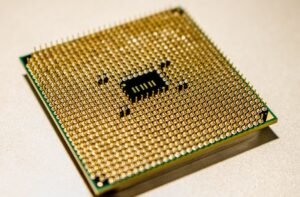Application with Biodata
When applying for a job or a position, it is common practice to submit an application along with a biodata. A biodata provides a summary of a person’s personal information, educational background, work experience, skills, and other relevant details. It serves as a tool for employers to evaluate the suitability of a candidate for a specific role. In this article, we will explore the significance of including a biodata in job applications and provide tips on creating an effective one.
Key Takeaways:
- Application with biodata is essential for job seekers.
- Biodata provides a comprehensive overview of an applicant’s qualifications.
- Creating a well-structured and tailored biodata increases chances of selection.
An application with a biodata allows employers to quickly assess a candidate’s suitability for a job. It provides a snapshot of the applicant’s qualifications, making the evaluation process more efficient. A well-structured biodata presents information in a clear and concise manner, highlighting the individual’s relevant skills and experiences. *Including targeted keywords in your biodata can improve its visibility to employers and increase the chances of being shortlisted for an interview.
Here are some essential components to include in your biodata:
- Personal Information: Start with your full name, contact details, and address. You may also include your date of birth and nationality, depending on the job requirements.
- Objective Statement: Write a brief statement summarizing your career goals and how you can contribute to the organization.
- Education: List your educational qualifications in reverse chronological order, starting with your highest degree. Include the name of the institution, degree earned, and year of completion.
| Skills | Years of Experience |
|---|---|
| Project Management | 5 years |
| Customer Service | 3 years |
| Data Analysis | 4 years |
Work Experience: Include relevant work experience, starting from the most recent position. *Highlight accomplishments and responsibilities that align with the requirements of the job you are applying for.
Skills: Showcase your skills that are relevant to the position. This could include technical skills, language proficiency, or any other abilities that set you apart. *Demonstrate how these skills have contributed to your previous roles or projects.
Benefits of including a biodata:
- Effective tool for employers to evaluate candidates
- Provides a concise overview of an individual’s qualifications
- Increases the chances of being shortlisted for an interview
Here are three tables each containing interesting data points and information:
| Top 5 Skills Employers Look For |
|---|
| 1. Communication |
| 2. Leadership |
| 3. Problem-Solving |
| 4. Teamwork |
| 5. Adaptability |
| Benefits of a Well-Structured Biodata |
|---|
| – Provides a snapshot of qualifications |
| – Increases chances of selection |
| – Enables quick assessment by employers |
| Elements of an Effective Biodata |
|---|
| – Personal information |
| – Objective statement |
| – Educational background |
| – Work experience |
| – Skills and competencies |
In conclusion, including a biodata in your job applications is crucial as it provides a comprehensive overview of your qualifications. By following the tips outlined in this article, you can create an effective and tailored biodata that enhances your chances of securing an interview. Remember to tailor your biodata according to the specific job requirements and focus on showcasing your relevant skills and experiences.

Common Misconceptions
Misconception 1: Biodata is the same as a resume
One common misconception people have is that a biodata is the same thing as a resume. However, they are actually different documents with unique purposes. While a biodata provides detailed personal information about an individual, including their family background, educational qualifications, and hobbies, a resume focuses more on professional qualifications, work experience, and skills. It is important to understand the distinction between the two to avoid confusion when applying for a job or educational program.
- A biodata provides personal information, while a resume focuses on professional qualifications.
- Biodata includes details about family background and hobbies, which are not typically included in a resume.
- A biodata gives a more holistic view of an individual, whereas a resume is more focused on career-related information.
Misconception 2: Biodata is only used for marriage proposals
Another misconception around biodata is that it is exclusively used in the context of marriage proposals. While it is true that biodata is commonly used in matrimonial matches in certain cultures, it is not limited to this purpose. In fact, biodata can also be used in professional settings, such as job applications or college admissions. Its comprehensive nature allows individuals to present a complete profile of themselves, making it useful in various contexts beyond just marriage.
- Biodata can be utilized in professional settings, including job applications and college admissions.
- Its comprehensive nature makes it suitable for presenting a complete profile of oneself.
- Biodata provides a holistic understanding of an individual’s background and qualifications, making it relevant in multiple contexts.
Misconception 3: Biodata is outdated and unnecessary in the digital age
Some people may believe that in the digital age, biodata has become outdated and unnecessary due to the prevalence of online profiles and resumes. However, this is a misconception. Biodata still holds importance as it allows individuals to provide a comprehensive overview of their personal and professional lives in one document. It can also be tailored to suit specific requirements or preferences of employers or educational institutions, making it a useful tool in the modern age.
- Biodata provides a comprehensive overview of personal and professional details in one document.
- It can be customized to suit specific requirements or preferences of employers or educational institutions.
- Biodata remains a relevant and useful tool in the modern digital age.
Misconception 4: Biodata is only important for individuals with no work experience
Some may mistakenly believe that biodata is only significant for individuals who do not have any work experience. However, this is not true. Biodata can be beneficial for individuals at any stage of their career or education. It allows individuals to highlight their skills, qualifications, and achievements, regardless of their level of professional experience. Whether someone is a fresh graduate, a mid-career professional, or a seasoned expert, biodata can be a valuable tool to showcase one’s abilities and potential.
- Biodata can be helpful for individuals at any stage of their career or education.
- It allows individuals to emphasize their skills, qualifications, and achievements, regardless of work experience.
- Biodata is valuable for both fresh graduates and experienced professionals alike.
Misconception 5: Biodata cannot be modified for different purposes
Lastly, some individuals incorrectly assume that biodata cannot be modified to suit different purposes. However, this is a misconception. Biodata can be customized and adjusted to align with specific requirements or contexts. For example, if someone wants to apply for a job in a specific industry, they can tailor their biodata to highlight relevant skills and experiences. This adaptability allows individuals to use biodata effectively across various applications and demonstrate their suitability for different opportunities.
- Biodata can be adjusted to align with specific requirements or contexts.
- It can be customized to emphasize relevant skills and experiences for particular applications.
- Biodata is adaptable and can be modified for different purposes or opportunities.

Introduction
In this article, we explore the diverse applications of biodata and its significance in various fields. Biodata, or biographical data, refers to information related to an individual’s personal, professional, and educational background. This data plays a vital role in numerous scenarios, including job applications, academic research, and matchmaking. Below, we present ten captivating tables that showcase the versatility and importance of biodata in different contexts.
Table 1: Medical School Admissions Statistics
This table displays the acceptance rates, average GPA, and MCAT scores of applicants to medical schools in the United States over the past five years. The data demonstrates the significance of biodata in determining eligibility for medical school admission.
Table 2: Employment Rates by Educational Background
This table highlights the percentage of individuals employed in various industries based on their educational qualifications. It emphasizes how biodata, specifically educational background, influences job prospects in different sectors.
Table 3: Genetic Traits and Disease Association
In this table, we delve into the correlation between specific genetic traits and the likelihood of developing certain diseases. Biodata analysis in genetics assists researchers in understanding disease risks and implementing preventive measures.
Table 4: Compatibility Scores for Online Dating
Online dating platforms often employ complex algorithms to calculate compatibility scores between potential partners. This table showcases the factors considered and weightage assigned to each trait during the computation of these scores.
Table 5: Biodiversity Hotspots Worldwide
Here, we present a table divulging information about the most significant biodiversity hotspots around the world. Biodata on plant and animal species within these regions helps conservationists prioritize areas for protection and preservation.
Table 6: Olympic Records by Country
This table documents the number of gold medals won by each country in various Olympic sports since the inception of the modern Games. Analyzing biodata, such as athletic performance and training techniques, aids in improving national Olympic performances.
Table 7: Psychological Traits in Leadership Positions
Examining the biodata of individuals in leadership positions, this table explores the prevalence of specific personality traits conducive to effective leadership. The data highlights the significance of psychological characteristics in successful leadership.
Table 8: Energy Consumption by Household Type
By analyzing the energy consumption patterns of different household types (e.g., single occupancy, families, retirees), this table offers insights into the impact of biodata, such as household size and composition, on overall energy consumption and conservation efforts.
Table 9: Educational Attainment by Income Level
This table presents the relationship between educational attainment and income levels across different demographic groups. It underscores the role of biodata, specifically education, in socioeconomic mobility and provides a platform for informed policy decisions.
Table 10: Migration Patterns and Demographics
Investigating migration patterns and demographics, this table showcases the influence of biodata on population distribution and movement. Understanding these factors aids in the development of strategic policies related to housing, infrastructure, and resource allocation.
Conclusion
Through the exploration of these ten captivating tables, we witness the profound impact of biodata on various aspects of society. Whether it be medical school admissions, employment rates, genetic research, or even online dating, biodata plays an essential role in decision-making processes, policy formation, and personal interactions. By harnessing the power of biodata, we can glean valuable insights into human behavior, societal trends, and make informed choices that shape our present and future.
Frequently Asked Questions
1. What is a biodata and why is it important in job applications?
What is a biodata?
Why is biodata important in job applications?
2. What should I include in a biodata for a job application?
What are the essential components of a biodata?
Should I tailor my biodata for each job application?
3. How should I format my biodata for maximum impact?
What is the recommended format for a biodata?
Should I include a photograph in my biodata?
4. Can I include hobbies and interests in my biodata?
Should I include hobbies and interests in my biodata?
What is the appropriate way to list hobbies in a biodata?
5. How can I make my biodata stand out from other applicants?
What are some tips to make my biodata stand out?
– Use a clean and modern design that reflects your professionalism.
– Highlight your achievements, skills, and relevant experiences prominently.
– Quantify your accomplishments with specific numbers or statistics.
– Tailor your biodata to the job requirements and incorporate keywords.
– Show your unique value proposition by emphasizing your strengths.
– Include testimonials or references from previous employers or mentors.
– Proofread your biodata for any errors or inconsistencies.
Remember, it’s essential to strike a balance between a visually appealing design and a clear, concise, and information-rich biodata.





